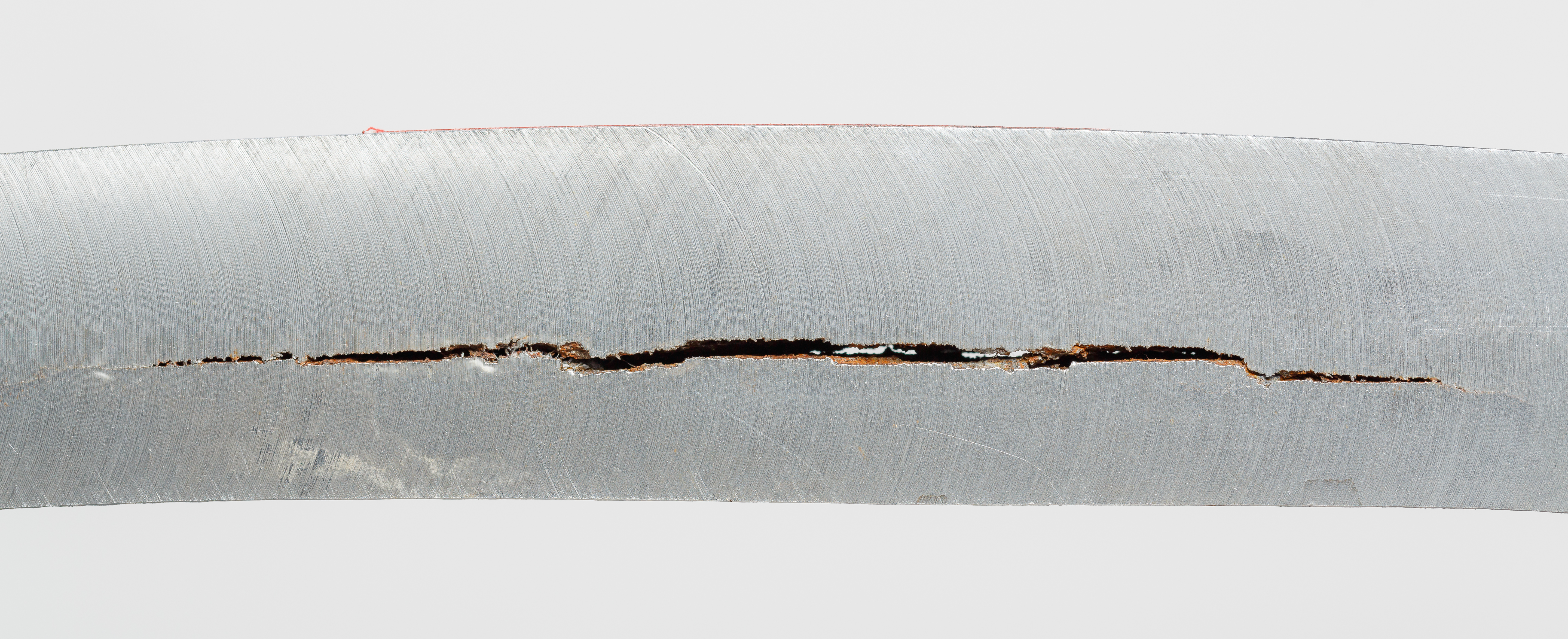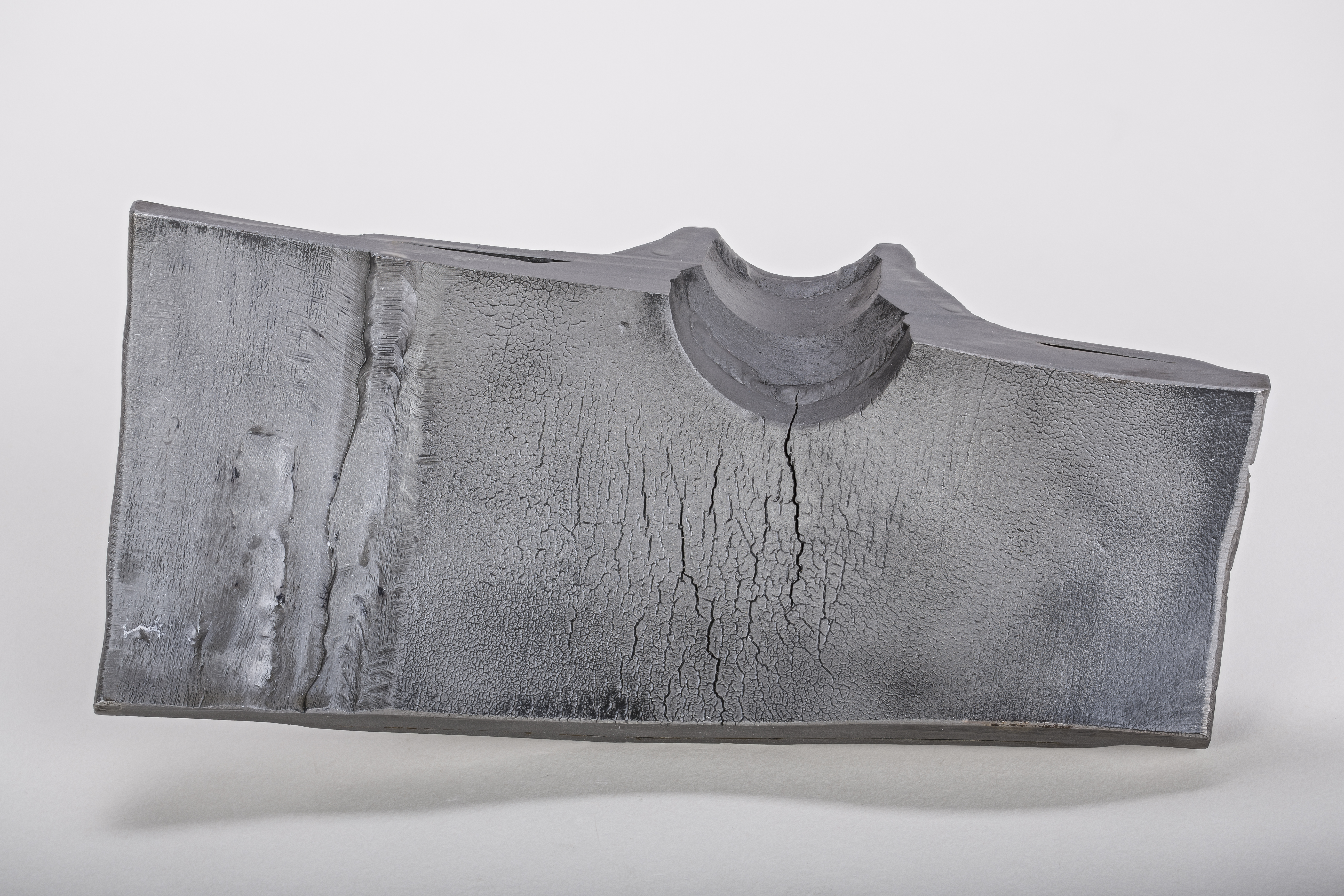|
Rising Step Load Testing
Rising Step Load Testing (or RSL testing) is a testing system that can apply loads in tension or bending to evaluate hydrogen-induced cracking (also called hydrogen embrittlement). It was specifically designed to conduct the accelerated ASTM F1624 step-modified, slow strain rate tests on a variety of test coupons or structural components. It can also function to conduct conventional ASTM E8 tensile tests; ASTM F519ASTM F519 - 18 "Standard Test Method for Mechanical Hydrogen Embrittlement Evaluation of Plating/Coating Processes and Service Environments", American Society for Testing and Materials, 2018. 200-hr Sustained Load Tests with subsequent programmable step loads to rupture for increased reliability; and ASTM G129 Slow Strain Rate Tensile tests. Testing The RSL Testing System can be applied to all of the specimen geometries in ASTM F519, including Notched Round Tensile Bars, Notched C-Rings, and Notched Square Bars. Product testing of actual hardware can also be conducted, ... [...More Info...] [...Related Items...] OR: [Wikipedia] [Google] [Baidu] |
Hydrogen Embrittlement
Hydrogen embrittlement (HE), also known as hydrogen-assisted cracking or hydrogen-induced cracking (HIC), is a reduction in the ductility of a metal due to absorbed hydrogen. Hydrogen atoms are small and can permeate solid metals. Once absorbed, hydrogen lowers the stress required for cracks in the metal to initiate and propagate, resulting in embrittlement. Hydrogen embrittlement occurs most notably in steels, as well as in iron, nickel, titanium, cobalt, and their alloys. Copper, aluminium, and stainless steels are less susceptible to hydrogen embrittlement. The essential facts about the nature of hydrogen embrittlement have been known since the 19th century. Hydrogen embrittlement is maximised at around room temperature in steels, and most metals are relatively immune to hydrogen embrittlement at temperatures above 150 °C. Hydrogen embrittlement requires the presence of both atomic ("diffusible") hydrogen and a mechanical stress to induce crack growth, although that str ... [...More Info...] [...Related Items...] OR: [Wikipedia] [Google] [Baidu] |
ASTM
ASTM International, formerly known as American Society for Testing and Materials, is an international standards organization that develops and publishes voluntary consensus technical standards for a wide range of materials, products, systems, and services. Some 12,575 ASTM voluntary consensus standards operate globally. The organization's headquarters is in West Conshohocken, Pennsylvania, about northwest of Philadelphia. It is founded in 1902 as the American Section of the International Association for Testing Materials (see also International Organization for Standardization). History A group of scientists and engineers, led by Charles Dudley, formed ASTM in 1898 to address the frequent rail breaks affecting the fast-growing railroad industry. The group developed a standard for the steel used to fabricate rails. Originally called the "American Society for Testing Materials" in 1902, it became the "American Society for Testing And Materials" in 1961. In 2001, ASTM official ... [...More Info...] [...Related Items...] OR: [Wikipedia] [Google] [Baidu] |
Coupon (materials Science)
In marketing, a coupon is a ticket or document that can be redeemed for a financial discount or rebate when purchasing a product. Customarily, coupons are issued by manufacturers of consumer packaged goods or by retailers, to be used in retail stores as a part of sales promotions. They are often widely distributed through mail, coupon envelopes, magazines, newspapers, the Internet (social media, email newsletter), directly from the retailer, and mobile devices such as cell phones. ''The New York Times'' reported "more than 900 manufacturers' coupons were distributed" per household, and that "the United States Department of Agriculture estimates that four families in five use coupons. "Only about 4 percent" of coupons received were redeemed. Coupons can be targeted selectively to regional markets in which price competition is great. Most coupons have an expiration date, although American military commissaries overseas honor manufacturers' coupons for up to six months past ... [...More Info...] [...Related Items...] OR: [Wikipedia] [Google] [Baidu] |
Slow Strain Rate Testing
Slow strain rate testing (SSRT), also called constant extension rate tensile testing (CERT), is a popular test used by research scientists to study stress corrosion cracking. It involves a slow (compared to conventional tensile tests) dynamic strain applied at a constant extension rate in the environment of interest. These test results are compared to those for similar tests in a, known to be inert, environment. A 50-year history of the SSRT has recently been published by its creator. The test has also been standardized and two ASTM symposia devoted to it. Effect of strain rate The important characteristic of these tests is that the strain rate is low, for example extension rates selected in the range from 10−8 to 10−3 s−1. The selection of the strain rate is very important because the susceptibility to cracking may not be evident from result of tests at too low or too high strain rate. For numerous material-environment systems, strain rates in range 10−5 - 10−6 s−1 are ... [...More Info...] [...Related Items...] OR: [Wikipedia] [Google] [Baidu] |
Environmental Stress Fracture
In materials science, environmental stress fracture or environment assisted fracture is the generic name given to premature failure under the influence of tensile stresses and harmful environments of materials such as metals and alloys, composites, plastics and ceramics. Metals and alloys exhibit phenomena such as stress corrosion cracking, hydrogen embrittlement, liquid metal embrittlement and corrosion fatigue all coming under this category. Environments such as moist air, sea water and corrosive liquids and gases cause environmental stress fracture. Metal matrix composites are also susceptible to many of these processes. Plastics and plastic-based composites may suffer swelling, debonding and loss of strength when exposed to organic fluids and other corrosive environments, such as acids and alkalies. Under the influence of stress and environment, many structural materials, particularly the high-specific strength ones become brittle and lose their resistance to fracture. Wh ... [...More Info...] [...Related Items...] OR: [Wikipedia] [Google] [Baidu] |
Stress Corrosion Cracking
Stress corrosion cracking (SCC) is the growth of crack formation in a corrosive environment. It can lead to unexpected and sudden failure of normally ductile metal alloys subjected to a tensile stress, especially at elevated temperature. SCC is highly chemically specific in that certain alloys are likely to undergo SCC only when exposed to a small number of chemical environments. The chemical environment that causes SCC for a given alloy is often one which is only mildly corrosive to the metal. Hence, metal parts with severe SCC can appear bright and shiny, while being filled with microscopic cracks. This factor makes it common for SCC to go undetected prior to failure. SCC often progresses rapidly, and is more common among alloys than pure metals. The specific environment is of crucial importance, and only very small concentrations of certain highly active chemicals are needed to produce catastrophic cracking, often leading to devastating and unexpected failure.ASM Internation ... [...More Info...] [...Related Items...] OR: [Wikipedia] [Google] [Baidu] |
Yield (engineering)
In materials science and engineering, the yield point is the point on a stress-strain curve that indicates the limit of elastic behavior and the beginning of plastic behavior. Below the yield point, a material will deform elastically and will return to its original shape when the applied stress is removed. Once the yield point is passed, some fraction of the deformation will be permanent and non-reversible and is known as plastic deformation. The yield strength or yield stress is a material property and is the stress corresponding to the yield point at which the material begins to deform plastically. The yield strength is often used to determine the maximum allowable load in a mechanical component, since it represents the upper limit to forces that can be applied without producing permanent deformation. In some materials, such as aluminium, there is a gradual onset of non-linear behavior, making the precise yield point difficult to determine. In such a case, the offset yiel ... [...More Info...] [...Related Items...] OR: [Wikipedia] [Google] [Baidu] |
Ultimate Tensile Strength
Ultimate tensile strength (UTS), often shortened to tensile strength (TS), ultimate strength, or F_\text within equations, is the maximum stress that a material can withstand while being stretched or pulled before breaking. In brittle materials the ultimate tensile strength is close to the yield point, whereas in ductile materials the ultimate tensile strength can be higher. The ultimate tensile strength is usually found by performing a tensile test and recording the engineering stress versus strain. The highest point of the stress–strain curve is the ultimate tensile strength and has units of stress. The equivalent point for the case of compression, instead of tension, is called the compressive strength. Tensile strengths are rarely of any consequence in the design of ductile members, but they are important with brittle members. They are tabulated for common materials such as alloys, composite materials, ceramics, plastics, and wood. Definition The ultimate tensile strength ... [...More Info...] [...Related Items...] OR: [Wikipedia] [Google] [Baidu] |
Fracture Toughness
In materials science, fracture toughness is the critical stress intensity factor of a sharp crack where propagation of the crack suddenly becomes rapid and unlimited. A component's thickness affects the constraint conditions at the tip of a crack with thin components having plane stress conditions and thick components having plane strain conditions. Plane strain conditions give the lowest fracture toughness value which is a material property. The critical value of stress intensity factor in mode I loading measured under plane strain conditions is known as the plane strain fracture toughness, denoted K_\text. When a test fails to meet the thickness and other test requirements that are in place to ensure plane strain conditions, the fracture toughness value produced is given the designation K_\text. Fracture toughness is a quantitative way of expressing a material's resistance to crack propagation and standard values for a given material are generally available. Slow self-sust ... [...More Info...] [...Related Items...] OR: [Wikipedia] [Google] [Baidu] |
Materials Testing
Materials testing is used to assess product quality, functionality, safety, reliability and toxicity of both materials and electronic devices. Some applications of materials testing include defect detection, failure analysis, material development, basic materials science research, and the verification of material properties for application trials. This is a list of organizations and companies that publish materials testing standards or offer materials testing laboratory services. International organizations for materials testing These organizations create materials testing standards or conduct active research in the fields of materials analysis and reliability testing. * American Association of Textile Chemists and Colorists (AATCC) * American National Standards Institute (ANSI) * American Society of Heating, Refrigerating and Air-Conditioning Engineers (ASHRAE) * American Society of Mechanical Engineers (ASME) * ASTM International * Federal Institute for Materials Research and ... [...More Info...] [...Related Items...] OR: [Wikipedia] [Google] [Baidu] |



